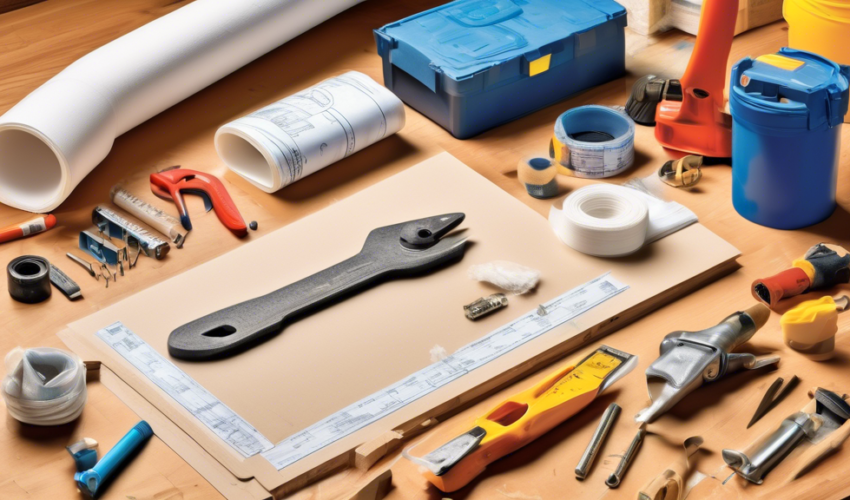Introduction to Drywall Projects
Drywall installation or repair is a common home improvement task that can significantly alter the appearance and functionality of your living spaces. Whether you’re constructing a new wall, remodeling an existing room, or fixing damages, understanding and gathering the essential materials beforehand can streamline the process and ensure a successful outcome. This comprehensive guide will explore the crucial materials needed for your drywall project.
1. Drywall Sheets
The foundational material for any drywall project is the drywall sheets themselves. Available in various sizes and thicknesses, these sheets are typically made from gypsum sandwiched between two layers of paper. The choice of size and thickness will depend on the project requirements. For example, 1/2-inch drywall is standard for walls, while 5/8-inch sheets are preferred for ceilings due to their additional strength and better fire resistance.
2. Drywall Screws
To secure the drywall sheets to the framing, you’ll need drywall screws. These are specially designed with fine threads for metal studs or coarse threads for wood studs. The length of the screws should be appropriate for the thickness of the drywall, ensuring a secure attachment without damaging the material.
3. Joint Compound
Also known as mud, joint compound is used to fill and smooth the seams between drywall sheets, cover the heads of the screws, and repair any imperfections. There are three main types of joint compound: all-purpose, topping, and setting. All-purpose mud is versatile for both taping and finishing, while topping is lighter and easier to sand but should only be used for the final coats. Setting compound hardens quickly and is excellent for repairs or when faster drying times are needed.
4. Drywall Tape
Drywall tape reinforces the joints between sheets and prevents cracking. It comes in paper or fiberglass mesh varieties. Paper tape is traditional and offers a smooth finish but requires a layer of mud applied to the wall before application. Fiberglass mesh tape is self-adhesive for easier use but can be more difficult to conceal under thin layers of joint compound.
5. Sandpaper or Sanding Sponge
After the joint compound dries, sanding is essential to achieve a smooth finish. Fine-grit sandpaper or a sanding sponge is preferred to smooth out the surface without causing damage. For larger projects, a pole sander can make the work easier and faster.
6. Primer and Paint
Once the drywall installation is complete and smooth, it’s ready for primer and paint. Primer is crucial for sealing the drywall and ensuring an even absorption of paint, leading to a more professional-looking finish. Choose a high-quality primer and paint designed for use on drywall.
7. Additional Tools and Materials
Beyond the primary materials, several tools and accessories will facilitate your drywall project:
- Drywall Knife: Used for applying and smoothing joint compound.
- Utility Knife: A sharp utility knife is essential for cutting drywall sheets to size.
- Drywall Saw: A keyhole saw or a rotary tool for making cuts for outlets, windows, or intricate shapes.
- Measuring Tape and Pencil: For precise measurements and marking cut lines.
- Level and T-Square: To ensure your installations are perfectly straight and level.
Conclusion
Gathering the essential materials and tools before starting your drywall project can significantly enhance the efficiency and outcome of your work. By understanding the purpose and proper use of each material, you’re well on your way to achieving professional-looking walls and ceilings. Remember to consider the specific requirements of your project and choose materials accordingly to ensure the best results.

